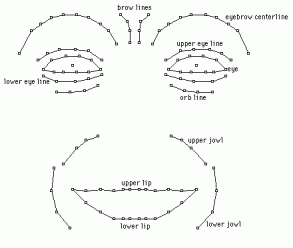We had a nice mention on Emily Short’s blog back on September 23rd.
And speaking of off-site reading, it’s probably a good time to remind people about the Phrontisterion blog, which has a fair amount to say about IF despite not being aggregated at Planet-IF. It’s specifically taking an outsider’s view at the IF community and IF tools, from the perspective of people interested in Chris Crawford’s work
If you’re not familiar with Emily Short check out her blog – she’s created of a number of seminal character-centric works of interactive fiction, is a key contributor to Inform 7, and one of the founders of Versu.
Traffic to the site doubled the day after her mention so I’m grateful but a bit embarrassed that I haven’t been as diligent about posting as I should have been. I guess I’ll have to resign myself to progress, not perfection.
In other “progress not perfection” news, Chris’ work on Siboot continues at a steady pace but it’s starting to look like the amount of work remaining has reached a point where it’s too much for one person.
Looking at this work list daunts me; how can I possibly get all this work done in any reasonable period of time? I was hoping to get this project done by the end of 2015, but this list suggests that it will take much longer than that. 2016? 2017? Even 2018? These dates bring into question the viability of the project.
To help him reach the finish line, Chris has issued a call-to-action for help in the following areas:
- Dream combat animation
- Facial displays
- Interstitial stories
- Novel feedback and editing
- Fixing the SWAT editor
- Commercializing the game
I myself volunteered to spend some of my free time digging through the Java code to see if I can get the LogLizard running again after Chris’ lobotomy (of the original Storytron code, not of Chris himself).
Undaunted in the face of adversity, Chris is considering a pivot.
Here’s the alternative I’m thinking about: I revert the Siboot storyworld to the original SWAT format so that I can edit it using the original, fully-functional SWAT. This permits me to take full advantage of all the great tools in SWAT, tools such as LogLizard that are broken in the Siboot version of SWAT.
After that.
I develop and refine the storyworld until it’s ready for prime time. It will look like hell, but it will play like heaven. It will have no consumer value, and will not impress anybody — except experienced game designers who have learned to look underneath the skin to see the bones and muscles.
And finally.
I’ll use Patreon to present this as a world-changing technology that I intend to give away by making it open-source. The Patreon money will pay for the people who make Siboot commercially viable, and then we’ll give away both the game and the source.
I’m a firm believer that perfect is the enemy of good so I can see some merit in this approach but I worry about Siboot/Storytron turning into some sort of never-ending research project.


